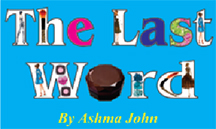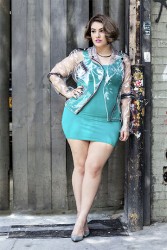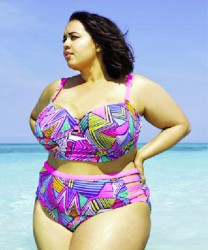Over the years, the fashion industry has learnt to become more accommodating and welcoming to all women.
I believe the retailers’ interest in plus-size fashion was sparked by the outpouring of disgust and complaints on fashion blogs and other popular social media that fight for style equality in the fashion industry. Women today are learning more and more to embrace themselves and are forcing designers and retailers to cater to them.
 Whether you are a size 6 or 16 women are all in the global fashion protest for clothes that fit. This fashion protest can be seen on blogs, YouTube and other places. Most popular fashion sites are now forced to carry tall, petite, maternity and curvy. Some clothing sites like ModCloth even offer consumers the option of deciding what styles go into production. Since the evolution of social media, retailers can no longer suppress the needs of consumers and force them into just what’s on offer. Consumers have a voice and where there is a need, there should be a supply.
Whether you are a size 6 or 16 women are all in the global fashion protest for clothes that fit. This fashion protest can be seen on blogs, YouTube and other places. Most popular fashion sites are now forced to carry tall, petite, maternity and curvy. Some clothing sites like ModCloth even offer consumers the option of deciding what styles go into production. Since the evolution of social media, retailers can no longer suppress the needs of consumers and force them into just what’s on offer. Consumers have a voice and where there is a need, there should be a supply.
The retail aspect of the plus-size fashion industry has seen continuous development that is controlled by fashion bloggers. It is quite different from the petite and tall clothing categories. There isn’t as much brand endorsement from celebrities as there is for petite or even maternity. The plus-size industry is one that grew completely from consumers operating as fashion gurus on an online social platform. Their influence is obvious. It is possibly one of the most thriving fashion designing sectors to be in at the moment.

Some plus-size fashionistas refer to themselves as curvy, whilst some refer to themselves as plus-size. Many retailers call their plus-size lines curvy. This seems to be the most socially acceptable term in the fashion world to refer to plus-size women.
Who exactly are these women that are currently steering this budding industry though?
Nadia Aboulhosn
Nadia Aboulhosn is a model based in the US. She started out with simple ‘outfit of the day’ posts in 2010. Her blogs posts are usually pictorial and carry mini inspirational quotes. Nadia has modelled for Teen Vogue, Boohoo.com, Seventeen magazine to name a few. She portrays a very blunt attitude towards the fashion industry and its double standards on her Instagram profile which she openly shows off.
GabiFresh

Gabi Gregg started her blog GabiFresh back in 2008 and she is credited with making swimsuits for plus-size women fashionable. Sure there were swimsuits available before, but they were all made to look like women over a certain size should feel ashamed of their bodies and cover up. Gabi changed and influenced this particular niche market. Her lines were snapped up in a week after they were released.
A majority of the collections being produced now are dependent on what these women, say or feel. Unlike the size 0-6 market, plus-size women have more control. They dictate the trends and shapes they want for themselves and in so doing have advanced that section of the industry.
These are just two of the many influential fashion bloggers. There are several others who I will explore in another article. However, it would be great to see regional designers catering more to plus-size women as I think designers have ignored this market place/opportunity. Fast fashion stores like ASOS and Boohoo have taken off with it.
Rather than just functionality, I think plus-size women deserve luxury, artsy clothing as well.
I also think room exists in Guyana and the Caribbean for plus-size bloggers.
www.online-runway.com
http://instagram.com/theonlinerunway









